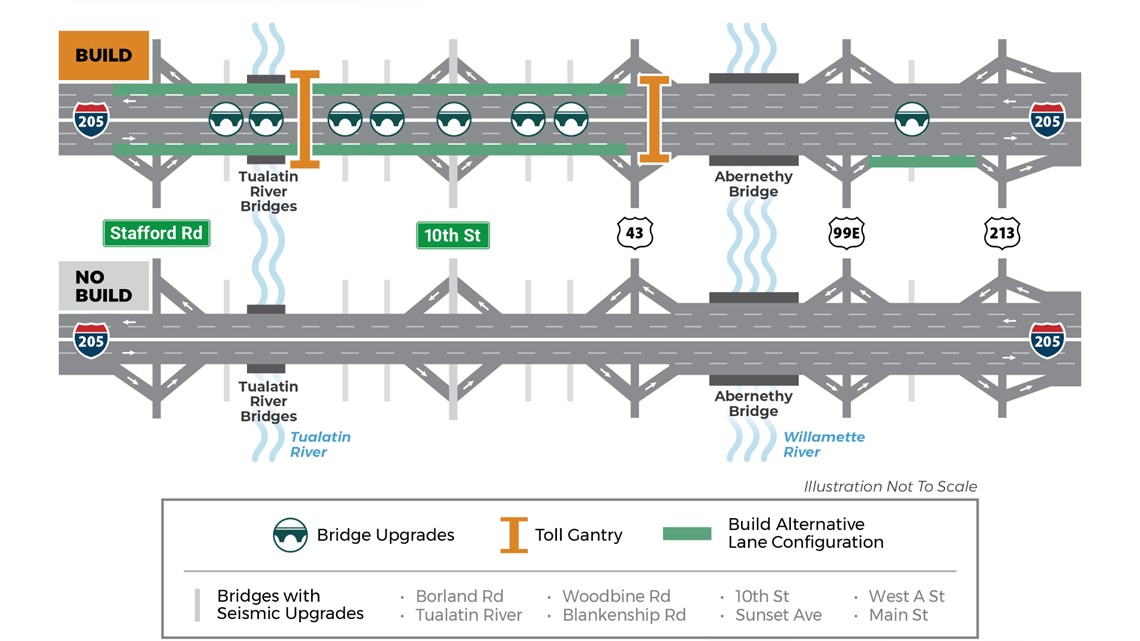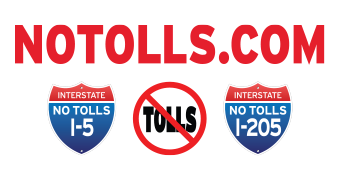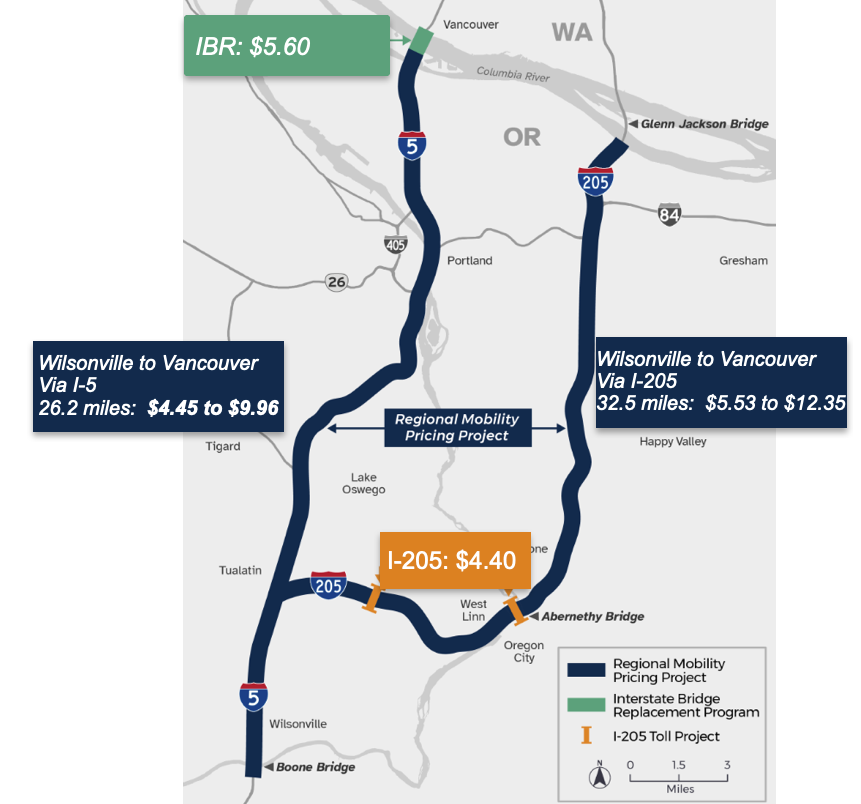ODOT is moving forward with tolls on Portland-area interstates, but a new bill would limit tolls to the I-5 Columbia River crossing.
SALEM, Ore. — Despite growing resistance, the Oregon Department of Transportation has been moving inexorably forward with new tolls for I-205 and I-5 around Portland. Sometime next fall, ODOT expects to roll out the first of these tolls on the Abernethy and Tualatin River bridges along I-205 near Oregon City.
But a new bill working its way through the Oregon legislature, Senate Bill 933, would force ODOT to hit the brakes on its plans. The bill is sponsored by state Sen. Mark Meek and several others. Meek is a Democrat from the Gladstone area.
Under the bill, the Oregon Transportation Commission would not be able to assess tolls on I-205 or I-5, though it would allow for tolling on the I-5 bridge over the Columbia River, old or new.
Meek shares this opposition to tolling with his predecessor, Republican Sen. Bill Kennemer. Last year, Kennemer proposed an amendment to the Oregon Constitution that would have stopped ODOT from instituting tolls altogether without voters in an impacted area approving the idea. The resolution didn’t advance during the previous legislative session, and Kennemer lost to Meek in the general election.
Meek’s bill is different in that it does not propose a constitutional amendment, which lowers the bar for passage considerably. The grassroots group “Vote Before Tolls” has separately been trying to gather signatures on an initiative petition that would do something similar to what Kennemer tried to do.
One of the people promoting Meek’s bill is former state Sen. Rick Metsger. He served in the legislature from 1999 until 2011, and he’s now a lobbyist representing the trucking industry. He argues that the current tolling plan doesn’t make sense, particularly the way it purports to encourage the use of alternatives.
“One of the goals of congestion pricing is to encourage them to take transit rather than their automobile to their different services,” Metsger said. “Where ODOT is starting in the south metro area — tolling multiple places on the Abernethy and Tualatin bridge areas, south 205 between Gladstone and Tualatin — there is no transit service. There is no TriMet. There is no passenger bus service. And so the tolls, to use that as an argument is really misplaced until such time as those other options for drivers to get out of their cars. But they would have no option other than diverting onto local neighborhoods.”
Metsger headed the transportation committee in the state Senate for 8 years, so he’s not new to this. He said that a better idea would be to create express lanes with tolls to allow people to use them if they want, without forcing everyone to pay the toll.
ODOT says they need the tolls on the bridges to pay for construction there. Metsger argues that they could find the funds elsewhere in the agency’s budget. ODOT also argues that they need tolling to pay for the gas tax money they are losing to electric vehicles and more efficient cars and trucks, but Metsger counters that it would be better to drop the gas tax and have drivers pay for every mile they drive.
The cost to commuters
In order to move forward with putting the first tolls in place, ODOT had to create an environmental impact assessment — a weighty 192-page report with several appendices.
The assessment covers where ODOT is at in terms of toll prices on the Abernethy and Tualatin River bridges at different times of the day.

Here’s the breakdown of hours and expected prices:
Peak hours
- 6 a.m. – 9 a.m. and 3 p.m. – 7 p.m.
- Between $1.65 and $2.20 to cross each bridge, with the price difference depending on the day of the week.
Shoulder peak hours
- 5 – 6 a.m., 9 – 10 a.m., 1 – 3 p.m. and 7 – 8 p.m.
- $1 to cross each bridge.
Off-peak hours
- 11 p.m. – 5 a.m.
- 55 cents per bridge
- 10 a.m. – 1 p.m. and 8 p.m. – 11 p.m.
- 65 cents per bridge
In a worst-case scenario example, a commuter has to cross both bridges during rush hour to get to work and back home. That would cost as much as $8.80 per day. For a 5-day work week, that would cost $44 a week, or $176 in a 4-week month. For an 11-month year, which assumes some generous vacation time, the cost would total $1,936 per year.
Those are still some preliminary fees that ODOT is considering. They could change before the final product, and the Oregon Transportation Commission will have the final say if all goes ahead as ODOT expects.
In the environmental assessment, ODOT actually estimates that the average household would spend closer to $575 per year in tolls on those two bridges. As a result, ODOT would generate about $132 million each year.
In the environmental study, ODOT also identified more than 45 intersections that could be impacted by drivers bailing out to avoid the I-205 tolls. The agency has a range of projections for where traffic will get bad, sometimes including what traffic would look like if they didn’t do anything at all.
The issue of off-ramping traffic, and the connected issue of public transportation infrastructure — or the lack thereof — has been another big issue for city and county officials in the areas where these tolls will fall.



One comment
Tracy Buchwalter
May 7, 2025 at 7:14 pm
What ODOT is trying to impose is absolutely impossible. The Citizens of this state are already over taxed and the funds in the state budget are not being used in accordance with what they we set to be used for. One example is the state Pers retirement fund, it has been missed used for years and Oregonians had to bail out Oregon leaders to correct the issues. Property Tax is through the roof, Gas tax in Oregon is one of the highest in the nation, next to Washington state, all thanks to our Legislation. So, What I am afraid of is that ODOT and the Governor will not use those toll dollars to build more lite rail down I-205 or I-5 for that matter. We need leaders to do the right thing for Oregon not what they think is best for themselves. Voter approval should be installed in Oregon’s Constitution so that All Oregonians have a say in how Money will be used, taxed, etc and how it will impact them financially.